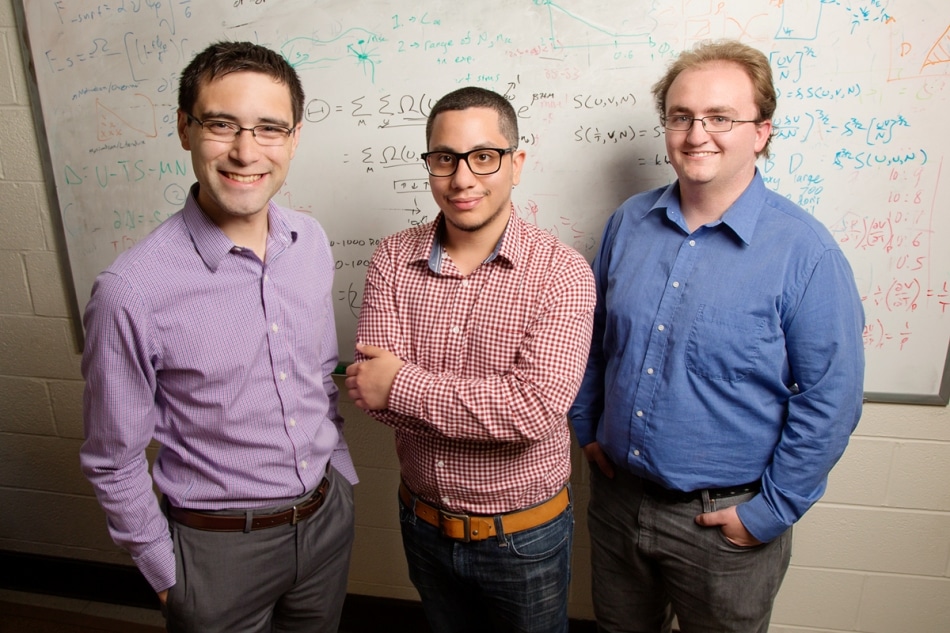Nov 3 2017
A team of researchers at the University of Illinois and the University of Massachusetts, Amherst have discovered the first steps toward attaining control over the self-assembly of artificial materials in the same way that biology develops natural polymers.
This advancement could prove beneficial in designing new bio-inspired, smart materials for applications spanning from sensing to drug delivery to remediation of environmental contaminants.
 Inspired by the principles of natural polymer synthesis, Illinois chemical and biomolecular engineering professor Charles Sing, left, and graduate students Jason Madinya and Tyler Lytle co-authored a study that found they could create new synthetic materials by tuning the electrostatic charge of polymer chains. (Photo by L. Brian Stauffer)
Inspired by the principles of natural polymer synthesis, Illinois chemical and biomolecular engineering professor Charles Sing, left, and graduate students Jason Madinya and Tyler Lytle co-authored a study that found they could create new synthetic materials by tuning the electrostatic charge of polymer chains. (Photo by L. Brian Stauffer)
Proteins, which are natural polymers, use amino acid building blocks to connect together long molecular chains. The specific site of these building blocks, called monomers, within these chains develops sequences that orders a polymer’s function and structure. In the journal Nature Communications, the researchers explain how to apply the concept of monomer sequencing to manipulate polymer structure and function by exploiting a property present in both natural and artificial polymers – electrostatic charge.
Proteins encode information through a precise sequence of monomers. However, this precise control over sequence is much harder to control in synthetic polymers, so there has been a limit to the quality and amount of information that can be stored, instead, we can control the charge placement along the synthetic polymer chains to drive self-assembly processes.
Charles Sing, a professor of chemical and biomolecular engineering at Illinois and study co-author
“Our study focuses on a class of polymers, called coacervates, that separate like oil and water and form a gel-like substance,” said Sarah Perry, a study co-author and University of Massachusetts, Amherst chemical engineering professor, as well as an Illinois alumna.
Through a series of computer simulations and experiments, the team discovered that the properties of the resulting charged gels can be tweaked by altering the sequence of charges along the polymer chain.
“Manufacturers commonly use coacervates in cosmetics and food products to encapsulate flavors and additives, and as a way of controlling the ‘feel’ of the product,” Sing said. “The challenge has been if they need to change the texture or the thickness, they would have to change the material being used.”
Sing and Perry show that they can reorder the structure of the polymer chains by tweaking their charge to design the preferred properties.
This is how biology makes the endless diversity of life with only a small number of molecular building blocks, we envision bringing this bio-inspiration concept full circle by using coacervates in biomedical and environmental applications.
Sarah Perry, study co-author and University of Massachusetts, Amherst chemical engineering professor
The findings of this research pave the way for a huge number of opportunities to increase the diversity of polymers used and the scale of applications, the researchers said. “Currently, we are working with materials on the macro scale – things that we can see and touch,” Sing said. “We hope to expand this concept into the realm of nanotechnology, as well.”
This research received support from the National Science Foundation and the U. of I. Graduate College.